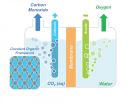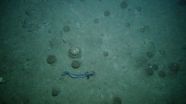(Press-News.org) Degenerating neurons in patients with Alzheimer's disease (AD) measurably responded to an experimental gene therapy in which nerve growth factor (NGF) was injected into their brains, report researchers at University of California, San Diego School of Medicine in the current issue of JAMA Neurology.
The affected neurons displayed heightened growth, axonal sprouting and activation of functional markers, said lead author Mark H. Tuszynski, MD, PhD, professor in the Department of Neurosciences, director of the UC San Diego Translational Neuroscience Institute and a neurologist at VA Medical Center, San Diego.
The findings are derived from postmortem analyses of 10 patients who participated in phase I clinical trials launched in 2001 to assess whether injected NGF - a protein essential to cellular growth, maintenance and survival - might safely slow or prevent neuronal degeneration in patients with AD.
Administering NGF directly into the brain - a first for treating of an adult neurodegenerative disorder - was done for two reasons. The NGF protein is too large pass through the blood-brain barrier, making it impossible to inject elsewhere. And freely circulating NGF causes adverse effects, such as pain and weight loss. By precisely injecting NGF into targeted regions of the brain, researchers could introduce the protein only to surrounding degenerating neurons.
The gene therapy approach has since progressed to phase II trials at multiple test sites. Results have not yet been released. The published findings come from AD patients who participated in safety trials from March 2001 to October 2012 at UC San Diego Medical Center. The participants lived one to 10 years after treatment.
"All of the Alzheimer's disease brains showed anatomical evidence of a growth response to the growth factor," said Tuszynski, who has been principal investigator for the trials from the beginning. "This means that growth factors as a class consistently result in activation of dying cells in human neurodegenerative disorders."
Tuszynski said the findings indicate NGF is safe over extended periods and that it merits continued testing as a potential AD treatment. Currently, there is no effective treatment or cure for AD.
INFORMATION:
Co-authors include Jennifer H. Yang, Mary M. Pay, Eliezer Masliah, David Barba, Hoi-Sang U, James M. Conner, Peter Kobalka, Subhojit Roy, and Alan H. Nagahara, all at UC San Diego; and Roy A. E. Bakay, Rush University Medical Center.
Funding support for this research came, in part, from the National Institutes of Health (grants AG10435 and AGO43416), the Veterans Health Administration, the Alzheimer's Association, the Donald and Darlene Shiley Family Trusts and Ceregene, Inc.
Disclosure: Mark Tuszynski is scientific founder of Ceregene, Inc., but has no present financial interest in the company.
Collisions with wind turbines kill about 100 golden eagles a year in some locations, but a new study that maps both potential wind-power sites and nesting patterns of the birds reveals sweet spots, where potential for wind power is greatest with a lower threat to nesting eagles.
Brad Fedy, a professor in the Faculty of Environment at the University of Waterloo, and Jason Tack, a PhD student at Colorado State University, took nesting data from a variety of areas across Wyoming, and created models using a suite of environmental variables and referenced them against areas ...
TALLAHASSEE, Fla. -- Florida State University researchers have taken a big step forward in the fight against cancer with a discovery that could open up the door for new research and treatment options.
Fanxiu Zhu, the FSU Margaret and Mary Pfeiffer Endowed Professor for Cancer Research, and his team uncovered a viral protein in the cell that inhibits the major DNA sensor and thus the body's response to viral infection, suggesting that this cellular pathway could be manipulated to help a person fight infection, cancer or autoimmune diseases.
They named the protein KicGas.
"We ...
Brief intervals of exercise during otherwise sedentary periods may offset the lack of more sustained exercise and could protect children against diabetes, cardiovascular disease and cancer, according to a small study by researchers at the National Institutes of Health
Children who interrupted periods of sitting with three minutes of moderate-intensity walking every half hour had lower levels of blood glucose and insulin, compared to periods when they remained seated for three hours. Moreover, on the day they walked, the children did not eat any more at lunch than on ...
Washington, DC--People who developed Type 2 diabetes tended to take more antibiotics in the years leading up to the diagnosis than people who did not have the condition, according to a new study published in the Endocrine Society's Journal of Clinical Endocrinology & Metabolism.
A person develops diabetes, which is characterized by high blood sugar levels, when the individual cannot produce enough of the hormone insulin or insulin does not work properly to clear sugar from the bloodstream.
More than 29 million Americans have diabetes, according to the Society's Endocrine ...
Washington, DC--Taking 3-minute breaks to walk in the middle of a TV marathon or other sedentary activity can improve children's blood sugar compared to continuously sitting, according to a new National Institutes of Health (NIH) study published in the Endocrine Society's Journal of Clinical Endocrinology & Metabolism (JCEM).
A sedentary lifestyle can put children at risk of developing pediatric obesity and metabolic health problems such as diabetes. Nearly 17 percent of children and teens nationwide are obese, according to the Society's Endocrine Facts and Figures report. ...
Washington, DC--For years after it was administered, growth hormone continued to reduce the risk of fractures and helped maintain bone density in postmenopausal women who had osteoporosis, according to a new study published in the Endocrine Society's Journal of Clinical Endocrinology & Metabolism.
Osteoporosis is a progressive condition that causes the bones to become weak and more likely to break. More than 10 million American adults have osteoporosis, and 80 percent of the people being treated for the condition nationwide are women, according to the Society's Endocrine ...
NASA's Aqua satellite and NOAA's GOES-West satellite provided temperature and cloud data on newborn Tropical Storm Jimena in the Eastern Pacific Ocean. Data from both satellites show the storm continues to consolidate.
Tropical Depression 13E formed about 865 miles (1,390 km) south-southwest of the southern tip of Baja California, Mexico at 5 p.m. EDT (2100 UTC) on August 26. Six hours later, the depression strengthened into Tropical Storm Jimena at 11 p.m. EDT.
A false-colored infrared image from Aug. 27 at 09:47 UTC (4:57 a.m. EDT) showed high, cold, strong thunderstorms ...
A molecular system that holds great promise for the capture and storage of carbon dioxide has been modified so that it now also holds great promise as a catalyst for converting captured carbon dioxide into valuable chemical products. Researchers with the U.S. Department of Energy (DOE)'s Lawrence Berkeley National Laboratory (Berkeley Lab) have incorporated molecules of carbon dioxide reduction catalysts into the sponge-like crystals of covalent organic frameworks (COFs). This creates a molecular system that not only absorbs carbon dioxide, but also selectively reduces ...
Researchers reporting in the Cell Press journal Current Biology on August 27 have evidence in support of a clearly defined depth limit for deep-sea fishing in Europe. The findings come just as the European Union considers controversial new legislation to manage deep-sea fisheries, including a ban on trawling below 600 meters.
"The most notable thing to consider about our findings is that the trend in catch composition over the depth range of 600 to 800 meters shows that collateral ecological impacts are significantly increasing while the commercial gain per unit effort ...
Isaac Newton was a classic neurotic. He was a brooder and a worrier, prone to dwelling on the scientific problems before him as well as his childhood sins. But Newton also had creative breakthroughs--thoughts on physics so profound that they are still part of a standard science education.
In a Trends in Cognitive Sciences Opinion paper published August 27, psychologists present a new theory for why neurotic unhappiness and creativity go hand-in-hand. The authors argue that the part of the brain responsible for self-generated thought is highly active in neuroticism, which ...


